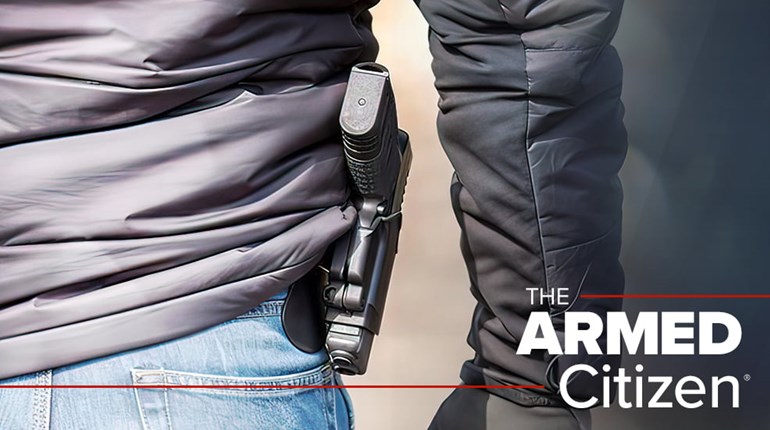
When all the mainstream-media outlets are telling the same story about research backing gun control, it’s time to dig.
In this case researchers published a study in the journal Pediatrics titled, “State Gun Laws and Pediatric Firearm-Related Mortality.” The study’s researchers say they found that: “States with stricter gun laws had lower rates of firearm-related pediatric mortality.”
Mainstream-media outlets treated the findings as anti-gun gospel.
- “Fewer American Kids Die in States With Tougher Gun Laws, According to This New Study” –Time
- “Child gun-death rates linked to state gun laws, national study finds” –The Philadelphia Inquirer
- “Children in states with strict gun laws are less likely to die, according to a new study” –CNN
The articles go on to treat the study without any real analysis—not a hint of journalistic cynicism. These researchers say they found that “universal” background-check laws (in quotes because how can such a law be universal when criminals by definition won’t follow it) and other gun-control laws reduce child-mortality rates. The trouble is, the study is very flawed.
It’s a “cross-sectional” study. It compares firearm-related death rates across various states that have different gun-control scores, as calculated by the anti-gun Brady Campaign. As state demographics, cultures and more are hardly uniform—Alabama is different from New York in a myriad of ways—such comparisons are problematic from the start.
A better way to see what effects a law has is to measure what changed before and after a law went into effect in a particular state, county and so on. Did the deaths of those who are 21 years old and younger—which is what this study covers—change after a “universal” background-check law went into effect? If there was an appreciable change, how can we be sure the background check law was a major factor? Such studies, obviously, aren’t controlled experiments that can be replicated in a laboratory. These questions must be seriously asked and rigorously answered.
This study doesn’t do anything like that, but instead compares apples to oranges.
“Few academics look at such purely cross-sectional data, simply because it is impossible in that case to accurately account for differences across different places,” says John Lott, founder and president of the Crime Prevention Research Center (CPRC).
Good examples of flawed cross-sectional analyses include attempts to compare homicide rates in the U.S. to those in the United Kingdom (U.K.). Both nations record crime data in very different ways. The U.K. basically won’t officially count a homicide until after a case has been adjudicated. This could be years later. They also may leave out homicide data purposely; for example, when a U.K. doctor allegedly murdered more than 200 of his patients, and a jury found him guilty of 15 of the murders in 2000, the British homicide statistics were not adjusted to include this data. The U.K. also doesn’t accumulate the data the way the FBI does for its “Uniform Crime Reporting Program.” The homicide data from the U.K. and the U.S. simply aren’t comparable; actually, when doing research for my book The Future of the Gun, I found that Scotland Yard officially says the U.K’s national data is not comparable.
Back to this study in Pediatrics, Lott also says, “Lumping all the different gun-control numbers into one number is pretty arbitrary. Not only is there the issue of what gun-control laws to include, there is also the issue of how to weight them. Is a three-day waiting period on buying guns the same as background checks on private transfers or a ban on open carrying of guns? Just adding up the number of laws in a state assumes that all the laws have the same importance.”
Rather than lumping all the laws together, Lott’s book, More Guns, Less Crime, for example, examines 13 different types of gun-control laws and accounts for differences in things such as the length of waiting periods, the yearly cost of concealed-carry permits and more.
In sum, this is a complex topic that these researchers have obviously treated in a certain way to get a desired political outcome. And they’re being rewarded for it by tons of favorable coverage from the mainstream media outlets that brainlessly advocate for more gun control.
The study’s conclusions even states as much: “Legislation to decrease injury from other obvious public health hazards, such as motor vehicle collisions and secondhand smoke exposure, has shown that the adoption of restrictive laws (e.g., seat belts, use of car seats, limits on where an individual can smoke, etc.) result in lower injury rates.”
Clearly, these researchers and those funding this research (a feature in the September issue of America’s 1st Freedom digs deep into this) want guns treated as a public-health risk, as this allows them to prescribe their preferred remedy: more gun bans and restrictions.
Most-Revealing Anti-Freedom Quote of the Week
“As a pediatric emergency medicine physician, I have personally cared for too many children who have been unfortunate victims of gun violence. Although there has been a recent uptick in firearm-injury prevention research, our country has not embraced this issue as it has other public health crises. An evidence-based and data-driven approach is the only way to combat this public health epidemic.” –The lead author of a study in the journal Pediatrics, titled “State Gun Laws and Pediatric Firearm-Related Mortality,” told this to Bloomberg. Does this sound like something a scientist or an activist would say?
Pro-Freedom Quote of the Week
“Swapping one failed mandate for another dooms smart guns to failure.” –Scott Bach, the head of the Association of New Jersey Rifle & Pistol Clubs, criticized a new law in New Jersey that would force gun dealers to make smart guns available for commercial sale that get a special commission’s approval.
(Frank Miniter is the author of Spies in Congress—Inside the Democrats’ Covered-Up Cyber Scandal. His latest book, The Ultimate Man’s Survival Guide to the Workplace, will be out this summer.)


































